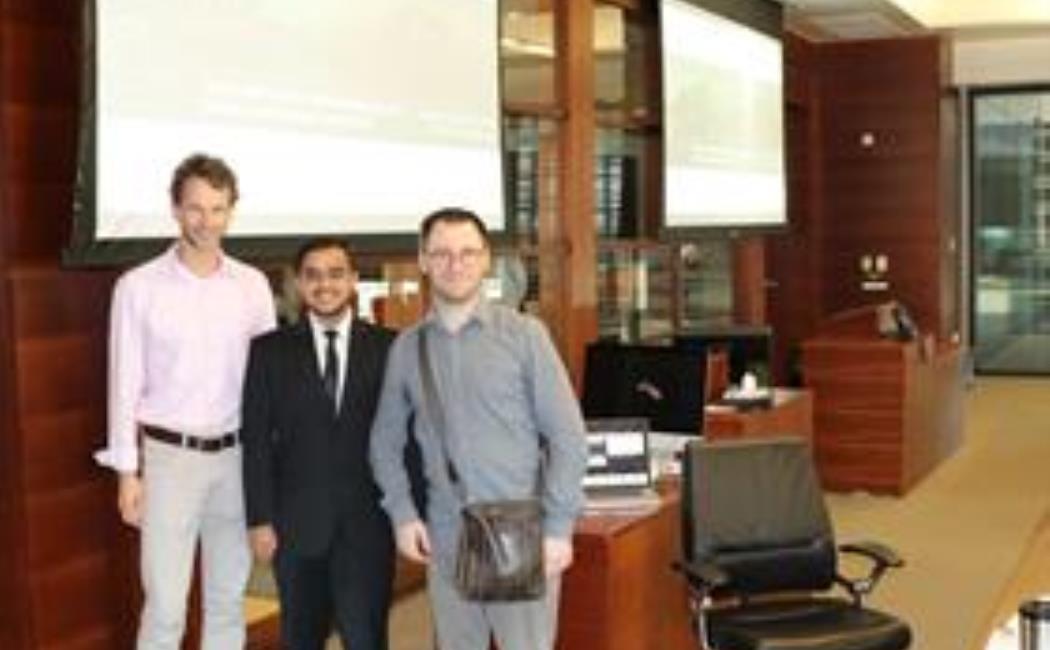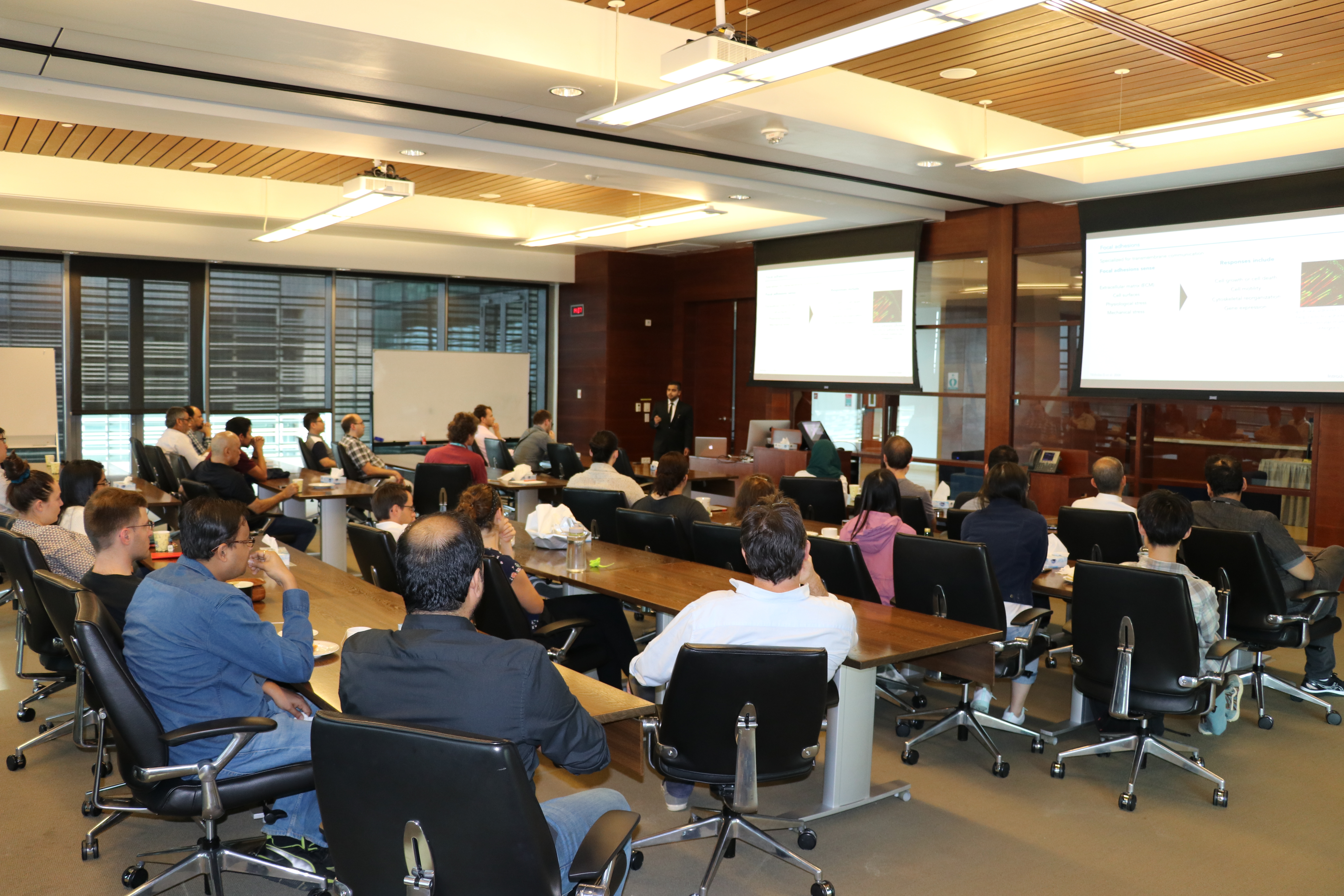
25 November, 2019

Abstract:
The focal adhesion kinase (FAK) and the protein tyrosine kinase 2-beta (PYK2) are two closely related non-receptor tyrosine kinases that link cell adhesion, migration and proliferation, and thus also promote cancer cell invasiveness. FAK and PYK2 have the same domain structure (comprising the FERM, kinase and FAT domains) and possess several overlapping functions, however their cellular roles can be different or even opposing. In particular, PYK2 can be activated by calcium, and has important functions in the brain and neurodegenerative disease. The molecular basis for calcium-based activation of PYK2 is unclear and controversial. In this work we combined biophysical and structural methods to determine the molecular basis for calcium-sensing in PYK2. For this, we investigated the least-studied region of these kinases, namely the long linker (KFL) region between the kinase and FAT domains. This linker is only ~20% conserved between FAK and PYK2, and, therefore, is a prime candidate for causing their differential properties. We find that the linker harbors a helical segment, which is conserved in both FAK and PYK2, and contributes to their dimerization (an important step in their activation). Helix-flanking regions differ between both proteins, and we show that these of PYK2 create a non-canonical dimeric binding site for calcium-bound calmodulin. Calmodulin-binding is synergistic with linker dimerization in PYK2, explaining how calcium influx can be translated into activation of PYK2. Collectively, our work clarifies the capacities for FAK and PYK2 to receive, process and transduce cellular signals, and may provide new opportunities for targeted therapeutic intervention.